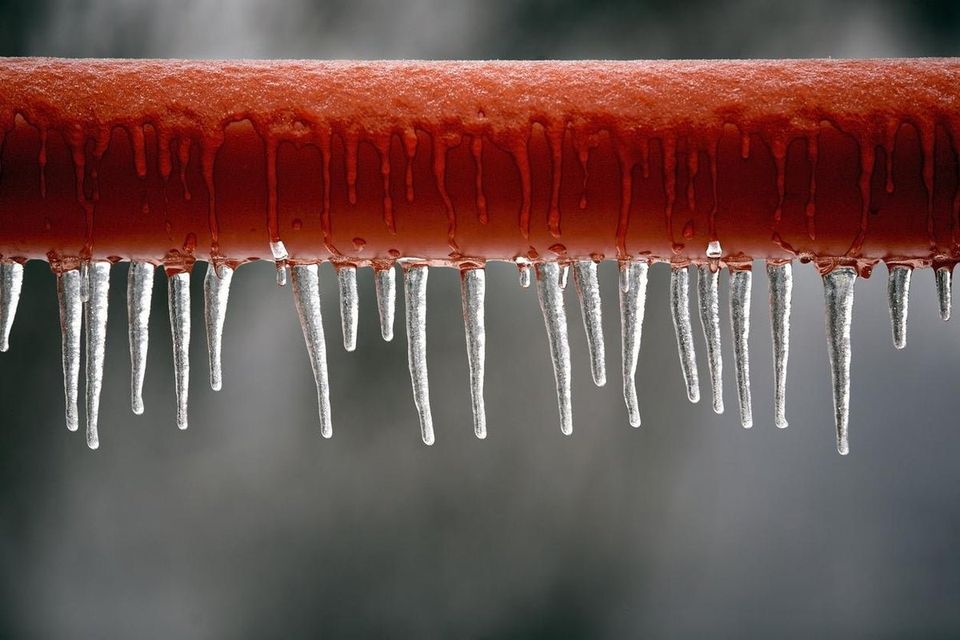Prevent Frozen Plumbing in Cold Weather: Expert Advice
Prevent Frozen Plumbing in Cold Weather: Expert Advice
Blog Article
The article down the page in relation to Winter Plumbing Precautions: Preventing Frozen Pipes is extremely enjoyable. Read it yourself and figure out what you think about it.

Winter can ruin your plumbing, particularly by freezing pipes. Right here's exactly how to avoid it from taking place and what to do if it does.
Intro
As temperature levels decline, the danger of frozen pipelines boosts, possibly causing expensive repairs and water damages. Understanding exactly how to prevent icy pipelines is crucial for home owners in cool environments.
Avoidance Tips
Shielding prone pipelines
Cover pipelines in insulation sleeves or make use of warmth tape to protect them from freezing temperatures. Concentrate on pipes in unheated or outside areas of the home.
Home heating techniques
Keep indoor rooms sufficiently heated up, specifically locations with pipes. Open up cabinet doors to allow warm air to circulate around pipes under sinks.
Exactly how to determine frozen pipes
Search for reduced water circulation from faucets, uncommon smells or sounds from pipelines, and noticeable frost on exposed pipes.
Long-Term Solutions
Structural changes
Take into consideration rerouting pipelines away from exterior wall surfaces or unheated locations. Add extra insulation to attic rooms, basements, and crawl spaces.
Upgrading insulation
Purchase premium insulation for pipelines, attics, and walls. Appropriate insulation assists preserve regular temperature levels and lowers the threat of icy pipelines.
Securing Outside Plumbing
Garden hoses and outdoor taps
Detach and drain pipes yard hoses before wintertime. Mount frost-proof spigots or cover outdoor taps with shielded caps.
Recognizing Icy Pipes
What causes pipelines to freeze?
Pipelines freeze when exposed to temperature levels listed below 32 ° F (0 ° C) for extended durations. As water inside the pipelines ices up, it expands, taxing the pipe walls and possibly causing them to rupture.
Threats and damages
Icy pipes can lead to water supply disruptions, residential property damages, and pricey repair services. Ruptured pipelines can flooding homes and create extensive architectural damage.
Signs of Frozen Piping
Determining frozen pipelines early can avoid them from breaking.
What to Do If Your Pipes Freeze
Immediate actions to take
If you presume frozen pipelines, keep taps open to eliminate pressure as the ice thaws. Use a hairdryer or towels soaked in warm water to thaw pipes gradually.
Verdict
Avoiding icy pipes needs aggressive measures and quick feedbacks. By understanding the causes, indications, and safety nets, homeowners can safeguard their pipes throughout winter.
5 Ways to Prevent Frozen Pipes
Drain Outdoor Faucets and Disconnect Hoses
First, close the shut-off valve that controls the flow of water in the pipe to your outdoor faucet. Then, head outside to disconnect and drain your hose and open the outdoor faucet to allow the water to completely drain out of the line. Turn off the faucet when done. Finally, head back to the shut-off valve and drain the remaining water inside the pipe into a bucket or container. Additionally, if you have a home irrigation system, you should consider hiring an expert to clear the system of water each year.
Insulate Pipes
One of the best and most cost-effective methods for preventing frozen water pipes is to wrap your pipes with insulation. This is especially important for areas in your home that aren’t exposed to heat, such as an attic. We suggest using foam sleeves, which can typically be found at your local hardware store.
Keep Heat Running at 65
Your pipes are located inside your walls, and the temperature there is much colder than the rest of the house. To prevent your pipes from freezing, The Insurance Information Institute suggests that you keep your home heated to at least 65 degrees, even when traveling. You may want to invest in smart devices that can keep an eye on the temperature in your home while you’re away.
Leave Water Dripping
Moving water — even a small trickle — can prevent ice from forming inside your pipes. When freezing temps are imminent, start a drip of water from all faucets that serve exposed pipes. Leaving a few faucets running will also help relieve pressure inside the pipes and help prevent a rupture if the water inside freezes.
Open Cupboard Doors
Warm your kitchen and bathroom pipes by opening cupboards and vanities. You should also leave your interior doors ajar to help warm air circulate evenly throughout your home.

I was introduced to that editorial about Preventing and dealing with frozen pipes from a pal on another web page. You should take the time to share this write-up if you liked it. I enjoy reading our article about How To Avoid Freezing Pipes.
Call Today Report this page